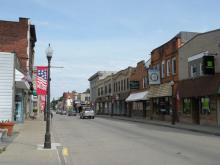Old Town-Orono Fiber: Poetry in Slow Motion
Born in Orono, Maine, the poet Frances Laughton Mace’s most notable verses were published in 1854 as a hymn entitled “Only Waiting.” Over a century and a half later, residents in her native town – and in the neighboring community of Old Town just four miles up the road – might be inclined to hum a line or two. Not because they are getting religion, but because of the wait in getting Fiber-to-the-Home (FTTH) Internet connectivity.
After a decade of hopeful planning, disappointing setbacks, design work, and putting out multiple RFPs to move the project forward, the nonprofit OTO Fiber Corporation is on the verge of lighting up a six-mile fiber network this summer. With three miles of fiber deployed in Orono, a town of 11,000 residents and home to the University of Maine’s flagship campus, and the other half covering a portion of Old Town, the budding network will provide FTTH service to a limited number of residences and businesses in both towns. It’s a pilot project that, if successful, will serve as a core network which can eventually be extended to cover the entirety of both communities.
“It’s taken us forever to get to this point it seems. We started this process ten years ago and we are still slogging our way through while we’ve seen other communities zip ahead,” Belle Ryder, Orono Assistant Town Manager and President of OTO Fiber, told us this week. “It is really, really, really hard for communities relying on volunteers to pull off the feat of building and operating these networks.”
Ryder wasn’t complaining or exasperated. She was just being candid about the process she and her colleagues at OTO Fiber are committed to see through to the finish. The slog she is referring to goes back a decade when Orono was in the process of putting together a comprehensive development plan.
Families and Fiber, Fits and Starts
With just about half of the town’s population made up of college students living in off-campus apartments and the other half made up of residents 60 and older, “we really needed to draw families back,” Ryder explained.



